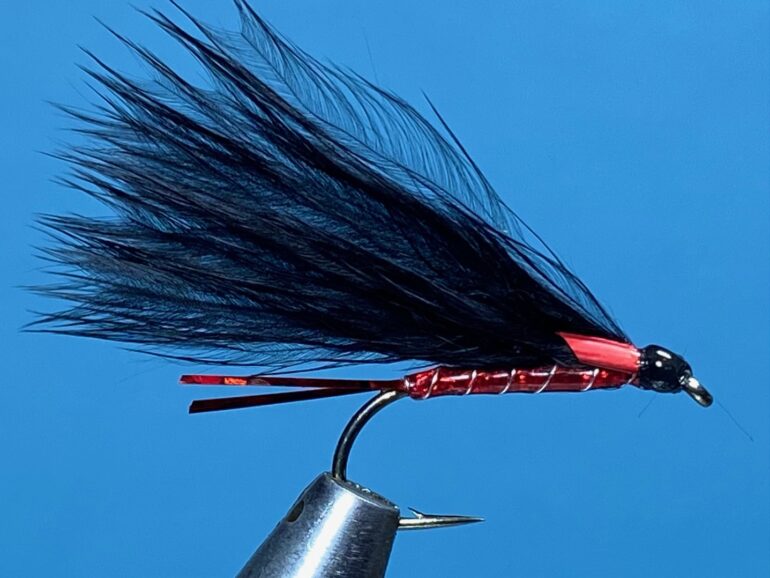
October A Fly to Tie and Try by Les Lockey
The Red Cormorant (variant)
Hook: Kamasan B170 or B175, sizes 10 to 14.
Thread: Semperfli Nanosilk, 50D, or any black flat thread.
Tail (optional): A few strands of red holographic Flashabou.
Rib: Silver wire.
Body: Red holographic tinsel, coated with UV resin and cured with torch.
Wing: Black marabou.
Cheeks: Fluorescent red goose biots.
TYING
Photo 1. Starting at the eye, wind the thread in touching turns to the barb and remove the excess thread.
Photo 2. Tie in a few strands of Flashabou for the tail and trim the waste ends to the length of the body. Follow this by tying in the silver rib, again leaving the waste end the same length as the body.
Photo 3. Bind down the waste ends with close turns of thread to form a smooth underbody.
Photo 4. Tie in a length of red holographic tinsel and in slightly overlapping turns, wind it down shank to the tail and back to the tie in point. Secure with thread and remove the excess tinsel.
Photo 5. Take one turn of silver wire around the base of the tail and the bottom end of the body, then continue to wind the wire rib in open spirals up the body. Secure with thread and worry off the excess wire.
Photo 6. Taking care to avoid the tail, carefully coat the body with UV resin and cure with a UV torch
Photo 7. Take a small bunch of marabou fibres and strip away the fluffy fibres from the base to expose the fine stems, then tie them in and remove any waste fibres. Tidy the area with a few turns of thread.
Photo 8. Trim a pair of goose biots to length and shape and tie them in so one sits either side of the marabou wing, then trim off the waste biots.
Photo 9. Form a neat head, whip finish and remove the thread. Varnish the head to complete the fly.
Tying Tips
- It is generally accepted that there are two types of Cormorant dressing; the original, which has an anorexic wing dressing and is considered to be a more imitative representation, while the other, as in this case, has a fuller marabou wing and is used as a small attractor lure. It is worth having both types in your box.
- The original skinny Cormorant wing was made from the fine marabou fibres taken from the tip of a marabou plume, but even skinnier results can be achieved using just a few goose feather fibres.
- Cormorants do not usually have tails, but I find the inclusion of a flashabou tail in this pattern makes it more effective.
- To make tinsel bodies more robust, I like to coat them with a fine UV resin. Alternatively, the tinsel can be wound over wet varnish or superglue, but this needs time to dry thoroughly before completing the dressing.
- After removing the fluffy fibres from the base of the marabou wing, I trim the basal ends to a short stub of about 1mm. in length, then using well waxed thread, I tie in the marabou wing by this short stub. This avoids trimming after the wing is in place and produces a smaller and neater head.
- Before tying in the goose biot cheeks, spin the bobbin holder clockwise to twist the thread fibres together into a fine rope, then tie in the biots securely with several tight thread turns.
- I remove the waste biot ends individually by keeping the thread under tight tension and pulling off the waste end against the tight thread. If done correctly, this produces a neater finish than cutting with scissors and will help to keep the head small and neat.
- Two other useful colour variants to try are, holographic silver body, black wing, with orange goose biot cheeks, and olive cock pheasant centre tail body, ribbed with pearl tinsel, olive marabou wing and yellow goose biot cheeks.
Fishing Hints
- Cormorants can be fished throughout the season, but this pattern is particularly effective from June onwards. It can be fished on any density line, although floating, sink tip and intermediate lines are the ones I generally use.
- This pattern fishes well on the dropper with either a damsel nymph or small weighted lure on the point, but during September and October, I find it fishes best in conjunction with a pink App’s Bloodworm. Alternatively, it can be fished as an attractor on the point with smaller nymphs or even traditional wet flies on the droppers.
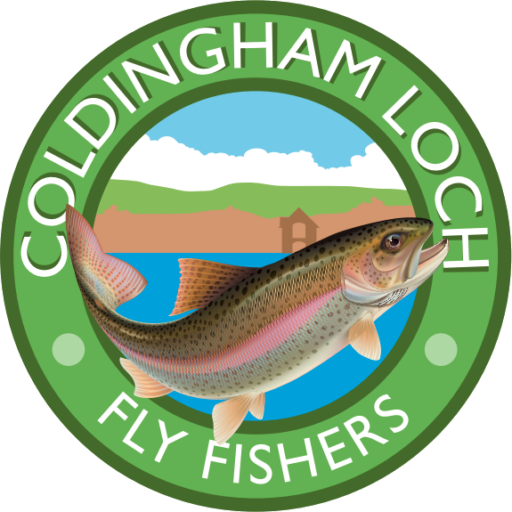

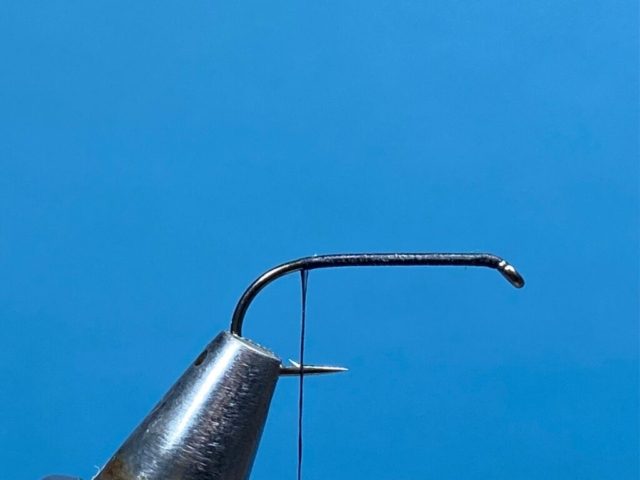
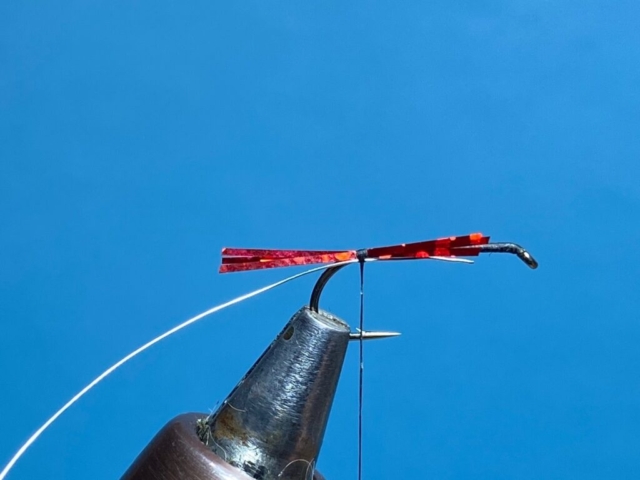


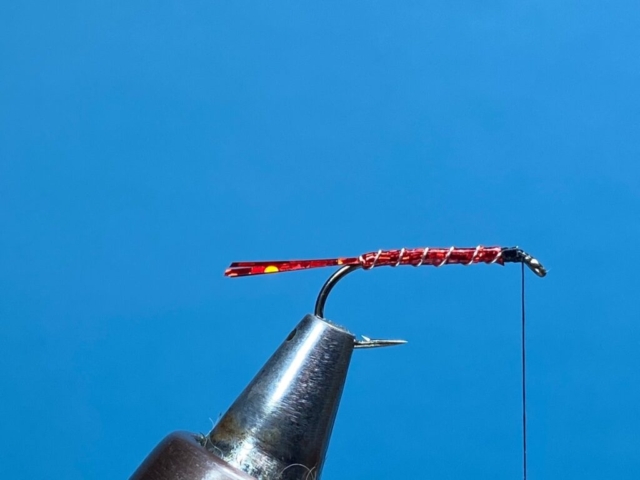
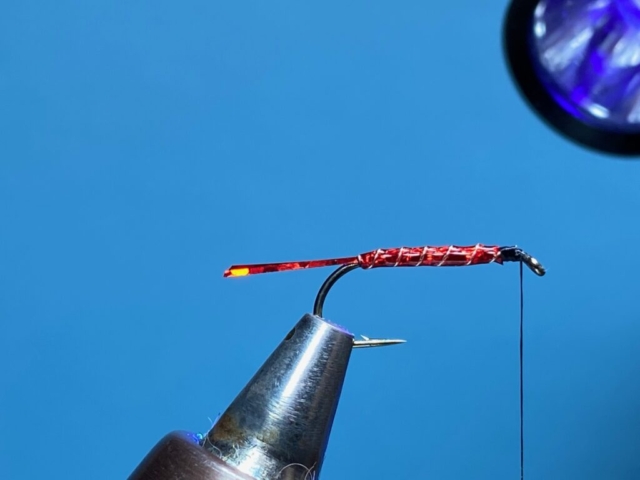




Recent Comments